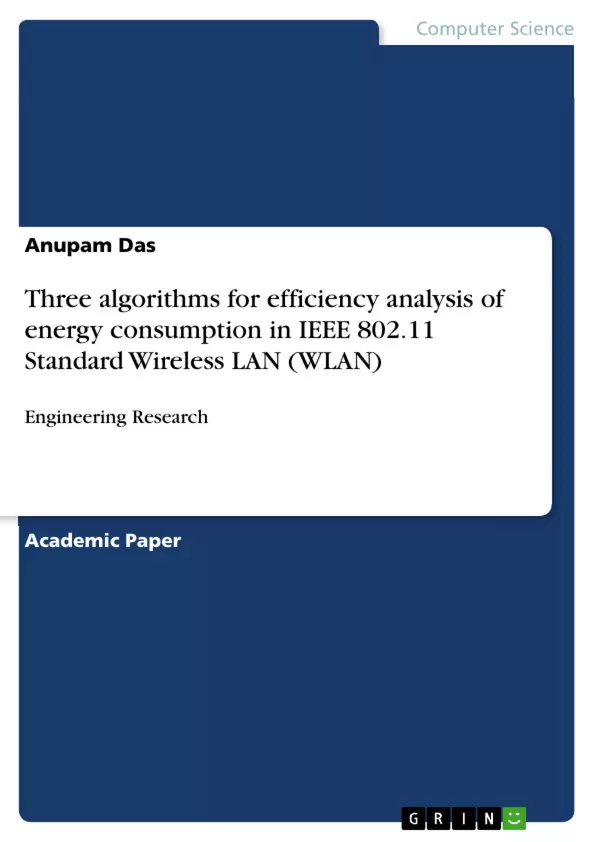This book will be useful for those who want to know and work on the topic Wireless LAN especially with energy consumption. The work is composed of the basics of WLAN and proposed three algorithms for efficiency analysis of energy consumption in IEEE 802.11 standards wireless LAN.
The primary aim of this work is to enhance the energy conservation. This can be achieved by reducing the spending of energy in the network, i.e. in the considered WLAN. One algorithm is proposed in this study which is based on energy for the different needs of the network. In the proposed study, the movements of the wireless nodes yield in old routing-paths, due to the lack of route accumulation updating. For that, a new cross layer framework is implemented along with the proposed algorithm to improve route supply performance in AODV. Using simulation, the results found for the proposed algorithm and the results show that it achieves better performance than the existing methods.
Inhaltsverzeichnis (Table of Contents)
- Chapter-1: What is WLAN? Components of WLAN
- Chapter-2: Need based Energy Algorithm and its working efficiency
- ABSTRACT
- General Terms
- Keywords
- INTRODUCTION
- What is WLAN?
- Assumptions for the study:
- Proposed study includes the following in the WLAN model:
- Energy MODEL
- Chapter-3: Energy Efficiency in IEEE 802.11 Standard WLAN through MWTDP
- Chapter-4 Energy Efficiency in IEEE 802.11 standard WLAN through MWTPP
- Chapter-5: Energy Efficiency in IEEE 802.11 standard WLAN through MWTPP and comparing its performance with CLP, NBEP and MWDTP
Zielsetzung und Themenschwerpunkte (Objectives and Key Themes)
This work focuses on enhancing energy conservation within Wireless Local Area Networks (WLANs) by optimizing energy expenditure. The study proposes a novel algorithm based on energy needs, aiming to improve routing efficiency and minimize unnecessary energy consumption.
- Energy Conservation in WLANs
- Efficient Routing Algorithms
- Cross-layer Framework Implementation
- Performance Evaluation and Comparison
- Energy Model in Wireless Networks
Zusammenfassung der Kapitel (Chapter Summaries)
- Chapter-1 introduces the concept of Wireless Local Area Networks (WLANs) and their key components, including access points, routers, and various user devices. It provides a basic overview of the technology and its applications.
- Chapter-2 focuses on a novel Need Based Energy (NBE) algorithm for enhancing energy efficiency within WLANs. The chapter discusses the challenges of routing in dynamic wireless environments and presents the NBE algorithm as a solution to minimize unnecessary energy consumption.
Schlüsselwörter (Keywords)
The primary focus of this work is energy efficiency in Wireless Local Area Networks (WLANs). Key concepts include energy conservation, routing algorithms, cross-layer framework, Need Based Energy (NBE), packet delivery ratio, end-to-end delay, and energy models.
- Arbeit zitieren
- Dr. Anupam Das (Autor:in), 2020, Three algorithms for efficiency analysis of energy consumption in IEEE 802.11 Standard Wireless LAN (WLAN), München, GRIN Verlag, https://www.grin.com/document/536250



